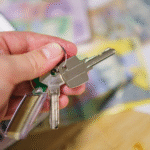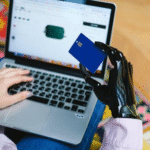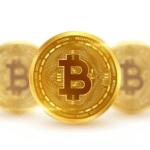The digital age has entered a new era of investing, and at the forefront stands blockchain technology. Forget the days of needing millions to invest in a valuable piece of art or a slice of prime real estate. Blockchain is revolutionizing the way we own and trade assets, opening doors to a world of possibilities for investors of all levels.
Imagine a scenario where you can own a tiny piece of the Mona Lisa, not by buying the entire painting (which would cost a fortune!), but by acquiring a digital token representing a fraction of its ownership. Or, picture yourself buying a virtual race car used in a popular online game and then trading it with other players on a secure digital marketplace. These are just a few examples of the exciting opportunities presented by blockchain asset investments.
But before we get deeper, let’s rewind a bit. Remember the frenzy surrounding CryptoKitties in 2017? These adorable digital cat collectibles, each unique and irreplaceable, were purchased with cryptocurrency on the blockchain. The record sale for a single CryptoKitty fetched a staggering $170,000! This wasn’t just a fad; it was a glimpse into the future of digital ownership and the potential of blockchain assets.
Fast forward to today, and the domain is even more diverse. Blockchain technology is not just about quirky cat collectibles anymore. It’s about democratizing investments, creating entirely new asset classes, and potentially generating lucrative returns. But like any investment, it’s not without its risks.
In this guide, we aim to equip you with the knowledge to navigate this exciting yet complex world, helping you understand the opportunities, the risks, and what the future holds for blockchain asset investments. So, without further ado, let’s get started:
What are Blockchain Assets?

Blockchain assets are digital representations of value stored on a distributed ledger called blockchain. Unlike traditional assets like stocks or bonds, blockchain assets are not controlled by a central authority. Instead, ownership is transparently recorded on the blockchain, a secure and tamper-proof database. This core principle of decentralization, along with immutability (unchangeable records) and transparency, underpins the unique characteristics of blockchain assets.
The Rise of Blockchain Asset Investment
The world of blockchain assets has evolved rapidly since Bitcoin’s debut. Initial Coin Offerings (ICOs) emerged as a fundraising method for blockchain startups, followed by Security Token Offerings (STOs) representing ownership in real-world assets. The market size of blockchain assets is estimated to be in the trillions, with projections for continued exponential growth in the coming years.

Why Invest in Blockchain Assets?

The traditional investment landscape is undergoing a seismic shift, and at the forefront stands blockchain technology. Blockchain assets, a new breed of investable instruments, are captivating investors with their unique characteristics and the potential to revolutionize the way we approach wealth creation. But what exactly makes them so enticing? Let’s explore deeper into the compelling reasons why you might consider incorporating blockchain assets into your investment portfolio.
· Diversification: A Shield against Market Volatility
One of the most significant advantages of blockchain assets lies in their ability to diversify your portfolio. By venturing beyond the world of traditional stocks, bonds, and real estate, you introduce a new asset class with distinct risk-reward profiles. This diversification can serve as a shield against market volatility, mitigating the impact of downturns in specific sectors. Imagine a scenario where a global economic slowdown triggers a correction in the stock market. While your traditional investments might be taking a hit, a well-chosen blockchain asset, uncorrelated with the traditional market, could potentially hold its value or even experience growth. This diversification benefit allows you to create a more robust and resilient investment portfolio.
· Fractional Ownership: Democratizing Access to Valuable Assets
Blockchain technology shatters the barriers to entry for many previously inaccessible investments. Traditionally, investing in high-value assets like real estate or fine art requires significant capital. Owning a Picasso or a piece of prime Manhattan real estate might have been a distant dream for many. But with blockchain, these assets can be fractionalized into smaller, more manageable tokens. This allows you to invest in a fraction of the asset’s value, opening doors to a world of possibilities for a wider range of investors. Imagine co-owning a masterpiece with a group of like-minded individuals or acquiring a share of a lucrative commercial property – all through the power of fractionalized ownership facilitated by blockchain.
· Increased Accessibility and Liquidity: Transforming Traditionally Illiquid Assets
Blockchain technology breathes new life into traditionally illiquid assets. Assets like private equity or venture capital investments often suffer from a lack of liquidity, meaning they can be difficult to buy or sell quickly. However, blockchain-based secondary markets are revolutionizing this landscape. By leveraging smart contracts and distributed ledger technology, blockchain facilitates easier and faster trading of these assets.
This increased liquidity empowers investors to enter and exit positions more readily, potentially enhancing their ability to manage their portfolios and capitalize on market opportunities.
· Potential for High Returns: A Calculated Risk with Rewarding Outcomes
The history of blockchain assets is marked by periods of explosive growth. Early investors in Bitcoin, for example, have witnessed phenomenal returns on their investments. While acknowledging the inherent volatility associated with this asset class, the potential for high returns remains a significant allure for some investors.
The nascent stage of blockchain technology also presents exciting possibilities for early adopters to get involved in groundbreaking projects with high growth potential. However, it’s crucial to remember that past performance is not indicative of future results. Thorough research, a well-defined risk tolerance, and a strategic investment approach are paramount before venturing into this potentially rewarding yet volatile space.
Types of Blockchain Assets

1. Cryptocurrencies: The Digital Currency Revolution
Cryptocurrencies, the pioneers of the blockchain revolution, are digital mediums of exchange that operate independently of central banks or traditional financial institutions. Bitcoin, the granddaddy of them all, paved the way for a new era of digital money. Other popular cryptocurrencies include Ethereum, Litecoin, and Ripple, each with its unique features and functionalities.
Cryptocurrencies can be used for peer-to-peer transactions, online purchases, and even as a store of value. However, their price volatility is a significant factor to consider, making them a high-risk, high-reward investment proposition.
2. Security Tokens: Bridging the Gap Between Traditional and Blockchain Assets
Security tokens represent fractional ownership in real-world assets or companies. This innovative approach leverages blockchain technology to tokenize assets like stocks, bonds, or even real estate. Security tokens offer several advantages, including increased transparency, fractional ownership, and potentially faster settlement times compared to traditional methods. They are essentially blockchain-based versions of traditional securities, allowing for a more efficient and secure investment experience. However, regulatory frameworks surrounding security tokens are still evolving, and investor due diligence is paramount before venturing into this space.

3. Utility Tokens: Fueling the Blockchain Ecosystem
Utility tokens provide access to specific products or services within a blockchain ecosystem. These tokens act like digital keys, granting users functionalities within a particular platform or application. For example, a blockchain-based gaming platform might use utility tokens to allow players to purchase in-game items or access exclusive features.
The value of a utility token is often intrinsically linked to the success and adoption of the underlying platform. Investing in utility tokens requires a thorough understanding of the associated project, its potential for growth, and the overall viability of the underlying ecosystem.
4. Non-Fungible Tokens (NFTs): Owning a Piece of the Digital Frontier
Non-fungible tokens (NFTs) represent a unique and exciting category of blockchain assets. Unlike cryptocurrencies or utility tokens, which are fungible (meaning one unit is interchangeable with another), NFTs are one-of-a-kind digital collectibles. They act as a digital deed of ownership for virtual items like artwork, music, or even in-game assets.
Owning an NFT grants you exclusive rights and verifiable ownership of the underlying digital asset. The NFT market has exploded in recent years, with record-breaking sales of digital art and collectibles. However, the market is still in its nascent stage, and proper valuation of NFTs can be challenging.
Opportunities in Blockchain Asset Investments
1. Democratization of Investments
Blockchain allows for fractional ownership of traditionally illiquid assets. Imagine co-owning a Picasso through a tokenized representation, or investing in a piece of prime real estate without the hefty upfront cost. This democratization opens doors for a wider range of investors to participate in previously inaccessible asset classes.

2. New Asset Classes
Blockchain has enabled the creation of entirely new asset classes. Non-fungible tokens (NFTs) represent digital ownership of unique items like artwork, collectibles, or even in-game items. The NBA Top Shot marketplace, for instance, allows fans to own and trade digital highlight reels of their favorite players.
3. Increased Liquidity
Previously illiquid assets can gain increased liquidity through blockchain-based secondary markets. Decentralized Exchanges (DEXs) operate without a central authority, potentially offering lower fees and increased accessibility compared to traditional exchanges.
4. Potential for High Returns
The history of blockchain assets is marked by high volatility but also significant returns for early investors. Bitcoin’s price, for example, skyrocketed from a few cents in its early days to tens of thousands of dollars today. However, it’s essential to remember that past performance is not indicative of future results. Conducting thorough research and understanding your risk tolerance is paramount before investing in any blockchain asset.
Risks Associated with Blockchain Asset Investments
1. Market Volatility
Many blockchain assets experience significant price fluctuations due to factors like market sentiment, regulatory uncertainty, and technological advancements. Cryptocurrencies, for instance, are known for their volatile swings. It’s crucial to be prepared for potential losses and invest only what you can afford.
2. Security Risks
Blockchain platforms and wallets can be vulnerable to hacking and scams. High-profile attacks on exchanges and wallet providers highlight the importance of security.

3. Regulatory Uncertainty
The regulatory landscape surrounding blockchain assets is constantly evolving globally. Governments are still grappling with how to classify and regulate these new asset classes. This uncertainty can create challenges for both investors and businesses operating in the blockchain space.
Here’s a breakdown of the significant impact regulations can have on different types of blockchain assets.
- Cryptocurrencies:Regulatory bodies are debating whether to classify cryptocurrencies as securities, commodities, or a new asset class altogether. Depending on the classification, regulations could impact how they are traded, taxed, and held.
- Security Tokens:These tokens representing ownership in real-world assets might face stricter regulations similar to traditional securities. This could involve increased compliance requirements for issuers and potentially limit investor participation.
- Utility Tokens:Regulations might focus on ensuring the functionality and purpose of utility tokens are clearly defined to protect investors from scams.
While regulatory uncertainty persists, it’s important to stay informed about developments in your jurisdiction. Look for guidance from established regulatory bodies and reputable industry sources. Working with qualified professionals with expertise in blockchain regulations can also help you navigate the complexities and make informed investment decisions.
4. Fraud and Scams: Buyer Beware!
The Wild West nature of the blockchain space, unfortunately attracts bad actors. Fraudulent activities are a significant risk for investors, and it’s crucial to be vigilant. Here are some common scams to watch out for:
- Pump-and-Dump Schemes:Fraudsters artificially inflate the price of a cryptocurrency through misleading marketing and fake trading activity. Once the price reaches a peak, they quickly sell their holdings, leaving unsuspecting investors with plummeting assets.
- Rug Pulls: In this scheme, developers create a seemingly legitimate project with a token, but then abruptly abandon it after raising funds from investors, taking the money with them.
- Exit Scams:Similar to rug pulls, exit scams involve fraudulent platforms or projects that disappear with investors’ funds after a period of operation.
Knowledge is your best defense against fraud. Here are some resources to help you identify and avoid scams:
- Reputable News Outlets:Stay informed by following news sources with dedicated coverage of the blockchain space. Look for publications with a track record of fact-checking and unbiased reporting.
- Educational Platforms:Numerous educational platforms offer resources on blockchain technology and investment strategies. Choose platforms with a strong reputation and a focus on investor education.
- Independent Reviews:Before investing in any blockchain project, conduct thorough research and read independent reviews from reputable sources. Be wary of overly promotional content and unrealistic promises.
By staying informed and exercising caution, you can significantly reduce the risk of falling victim to scams in the blockchain space.
Market Outlook for Blockchain Asset Investments: A Glimpse into the Future
The future of blockchain asset investments is brimming with potential, fueled by industry growth projections, ongoing technological advancements, and emerging trends. Let’s get into these key drivers and what they might signify for investors.
Industry Growth Projections: A Bullish Landscape
Credible industry reports paint a bullish picture of the future of the blockchain asset market. Market research firms like Gartner and Forrester forecast significant growth in the coming years, with estimates reaching into the trillions of dollars by 2030. This growth is attributed to several factors, including:
- Institutional Adoption:Major financial institutions are increasingly exploring the potential of blockchain assets. As institutional investors enter the space, they bring with them significant capital and expertise, further legitimizing the market.
- Technological Advancements:Ongoing development in blockchain technology is addressing scalability issues and enhancing security protocols. These advancements will pave the way for wider adoption and increased functionality of blockchain assets.
Technological Advancements: Building a Better Future
Technological innovations are continuously shaping the blockchain landscape. Here’s how some key advancements could influence blockchain assets:
- Scalability Solutions:Blockchain scalability issues have historically hindered mass adoption. New protocols and solutions are emerging to address this challenge, enabling faster transaction processing and potentially lower fees.
- Improved Security Protocols:As security breaches remain a concern, advancements in cryptography and consensus mechanisms will bolster the security of blockchain platforms, fostering trust and confidence among investors.
- Interoperability:Future blockchain advancements might lead to greater interoperability between different blockchain networks. This would allow for seamless transfer of assets and data across platforms, further enhancing the utility and functionality of blockchain assets.
Emerging Trends: Shaping the Future
Beyond technological advancements, exciting trends are taking root in the blockchain space:
- Decentralized Finance (DeFi): DeFi refers to a financial ecosystem built on blockchain technology, eliminating the need for traditional intermediaries like banks. DeFi offers innovative financial products like lending, borrowing, and trading, potentially revolutionizing the financial landscape and creating new investment opportunities.
- Tokenization of New Asset Classes:Blockchain technology allows for the tokenization of virtually any asset class, from real estate and intellectual property to fine art and even carbon credits. This opens doors for increased liquidity and fractional ownership of traditionally illiquid assets.
Investor Considerations: Charting Your Course
The potential of blockchain asset investments is undeniable. However, navigating this dynamic market requires a cautious and informed approach. Here are some key considerations for investors:
- Conduct Thorough Research:Before investing in any blockchain asset, conduct in-depth research on the underlying technology, the project or company behind it, and the associated risks.
- Start Small and Build Gradually:As with any new investment, it’s wise to start small and gradually build your portfolio as you gain experience and knowledge.
- Understand Your Risk Tolerance:Blockchain assets are inherently volatile. Invest only what you can afford to lose and align your investment strategy with your risk tolerance.
- Stay Informed:The blockchain space evolves rapidly. Stay updated on the latest developments, industry trends, and regulatory changes to make informed investment decisions.
Partnering with a Trusted Guide
Considering the complexities of the blockchain asset market, partnering with a qualified professional can be invaluable. Look for a reputable investment advisor or consulting firm with expertise in blockchain technology and digital assets. They can guide you through the investment process, help you identify suitable opportunities, and manage your portfolio in accordance with your risk tolerance and financial goals.
Kenson Investments, for example, offers comprehensive digital asset consulting services. We can help you navigate the complexities of the blockchain space, identify promising investment opportunities, and develop a customized investment strategy aligned with your goals.
The world of blockchain asset investments is shining with potential, offering new asset classes, innovative investment strategies, and the potential for high returns. However, it’s crucial to be aware of the associated risks, including market volatility, security threats, and regulatory uncertainty. By approaching this market with a cautious and informed perspective, conducting thorough research, and potentially partnering with a qualified professional, you can navigate the complexities and position yourself to capitalize on the exciting opportunities that lie ahead.
The future of blockchain asset investments is yet to be written, but one thing is certain: it will be a transformative journey, reshaping the way we invest and interact with the financial world. This is just the beginning. Get in touch with us today.
Disclaimer: The content provided on this blog is for informational purposes only and should not be construed as financial advice. The information presented herein is based on personal opinions and experiences, and it may not be suitable for your individual financial situation. We strongly recommend consulting with a qualified financial advisor or professional before making any financial decisions. Any actions you take based on the information from this blog are at your own risk.














